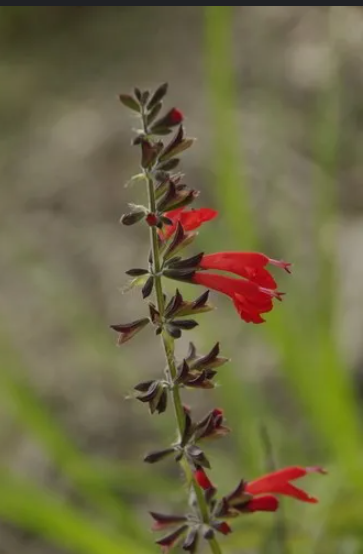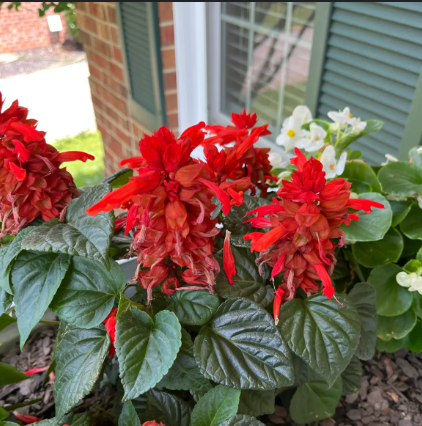Scarlet Sage Plant
Scarlet Sage (Salvia splendens) is an annual that grows 1-2 ft tall, hardy in USDA Zones 10-11, prefers well-drained, rich soil, full sun to part shade, medium moisture, and has no edible or medicinal uses.

Habit
Upright
Height
30-100 cm
Growth
Annual
Soil
Well-drained loamy
Shade
Full Sun
Moisture
Moderate
Edible
No
Medicinal
No
Origin
Brazil
Climatic Condition
Tropical, Subtropical
Temperature (°)
15-30°C
Humidity (%)
50-80%
Potting media
Peat, compost
Fertilizers
Balanced fertilizers
Watering
Regular
Plant Weight
50-200 g
Flowering Time
Spring to Summer
Soil Ph level
6.0 - 7.5
Water Ph level
6.0 - 7.5
Soil EC
1-2 dS/m
Yield Per Plant
Ornamental
NPK ratio
10:10:10
life Span
Annual
Health Benefits
Attracts pollinators, ornamental
Suggested Grow Media or Potting Mix ?
50% loam, 25% compost, 25% sand
Suggested Fertigation/Fertilizers
Fertilize every 4 weeks with a balanced fertilizer.
Common Diseases and Remedies
Powdery Mildew, Gray Mold, Aphids, Leaf Miner, Root Rot.
White powdery growth on leaves, Gray, fuzzy mold on leaves and flowers, Yellowing leaves, sticky residue on leaves, White, winding trails on leaves, Wilting, yellowing leaves, root discoloration.
Neem oil, baking soda spray Improve, air circulation, remove affected parts, Insecticidal soap, ladybugs, Neem oil, Improve soil drainage, use beneficial soil microbes.
Sulfur-based fungicides, Iprodione or thiophanate-methyl, Insecticides containing imidacloprid, Systemic insecticides, Fungicides with metalaxyl or mefenoxam.
HEALTH BENEFITS
· Cognitive support: Improves memory and concentration.
Anti-inflammatory: Used in herbal remedies for sore throats and skin issues.

